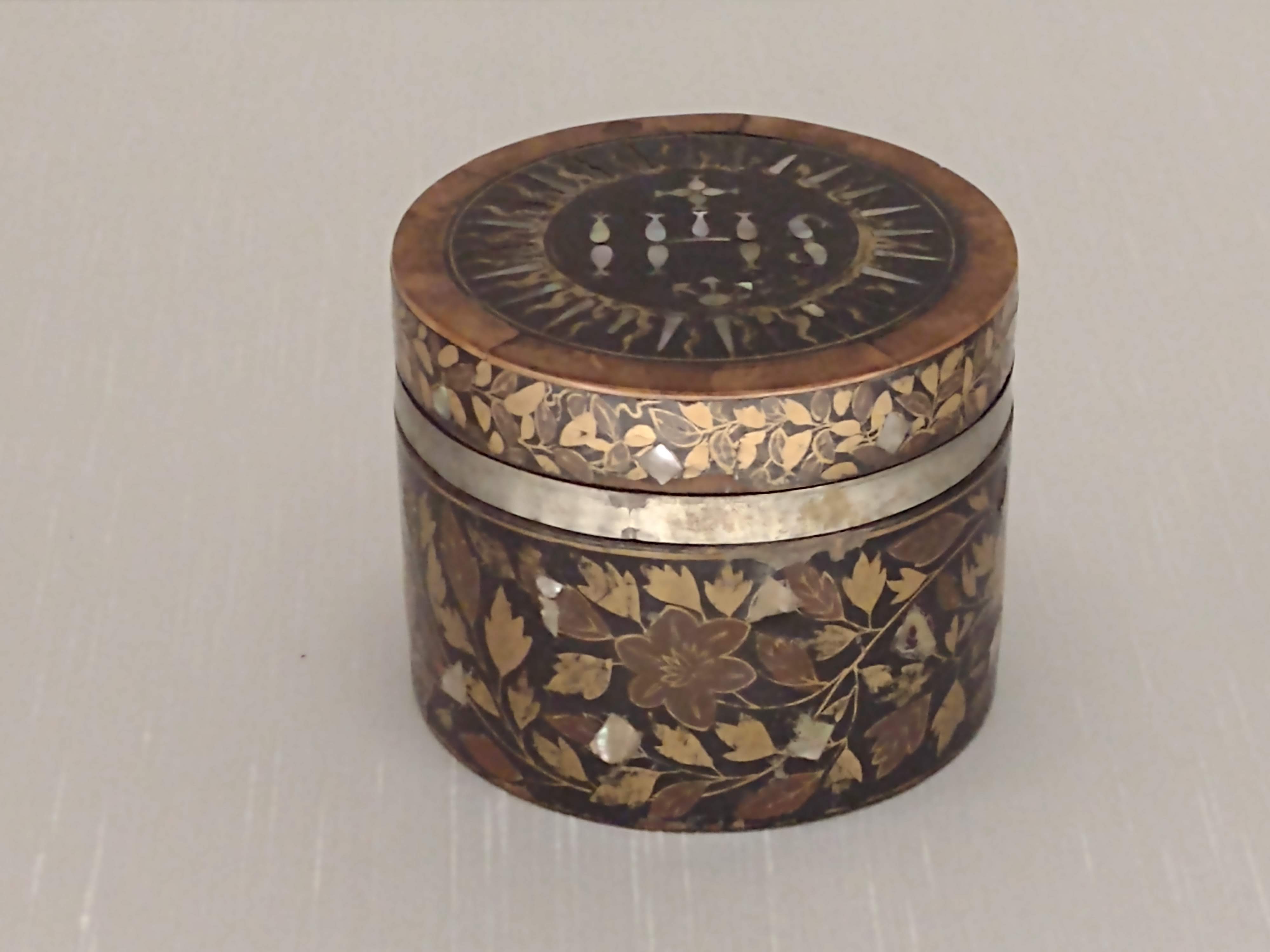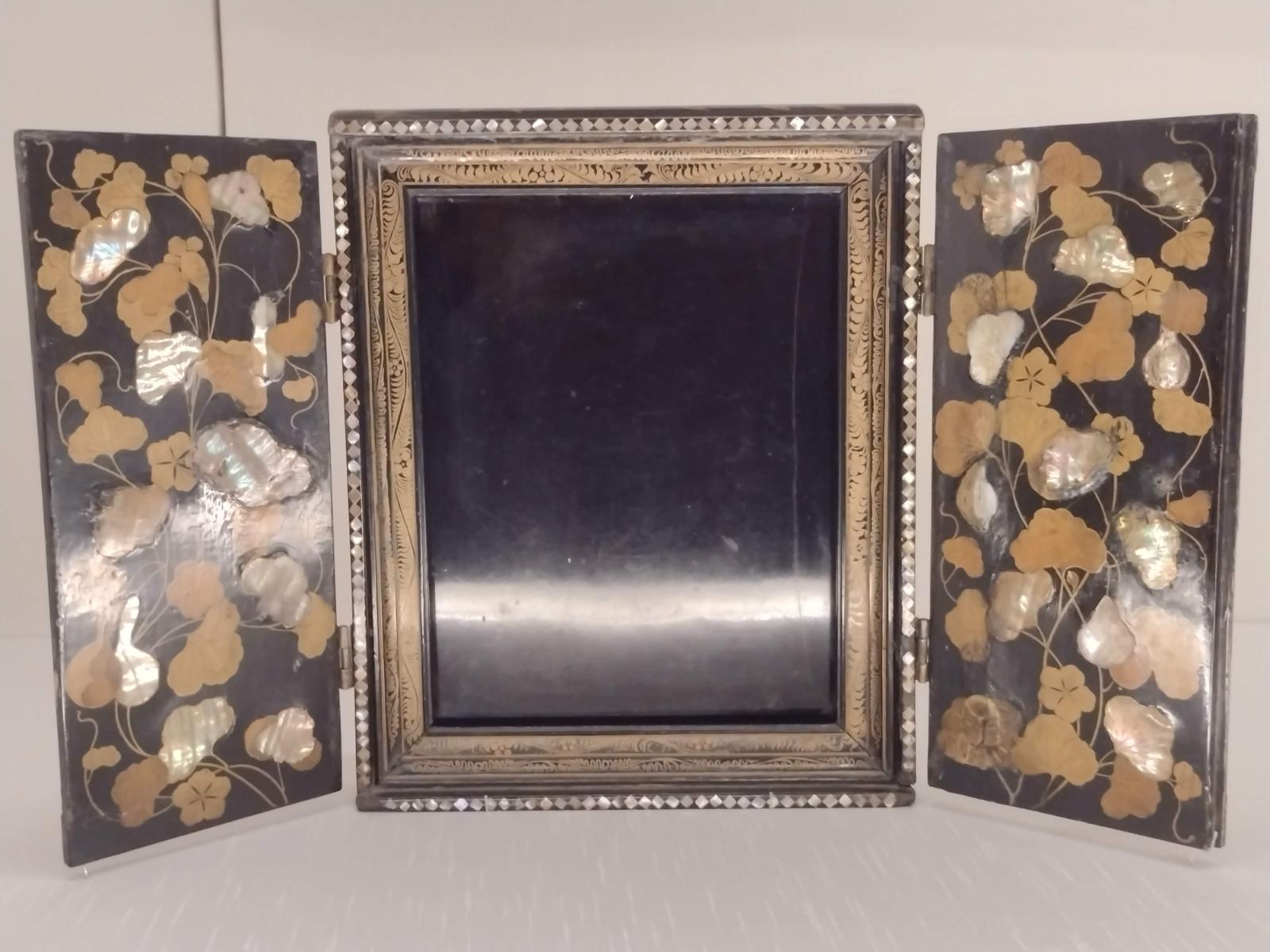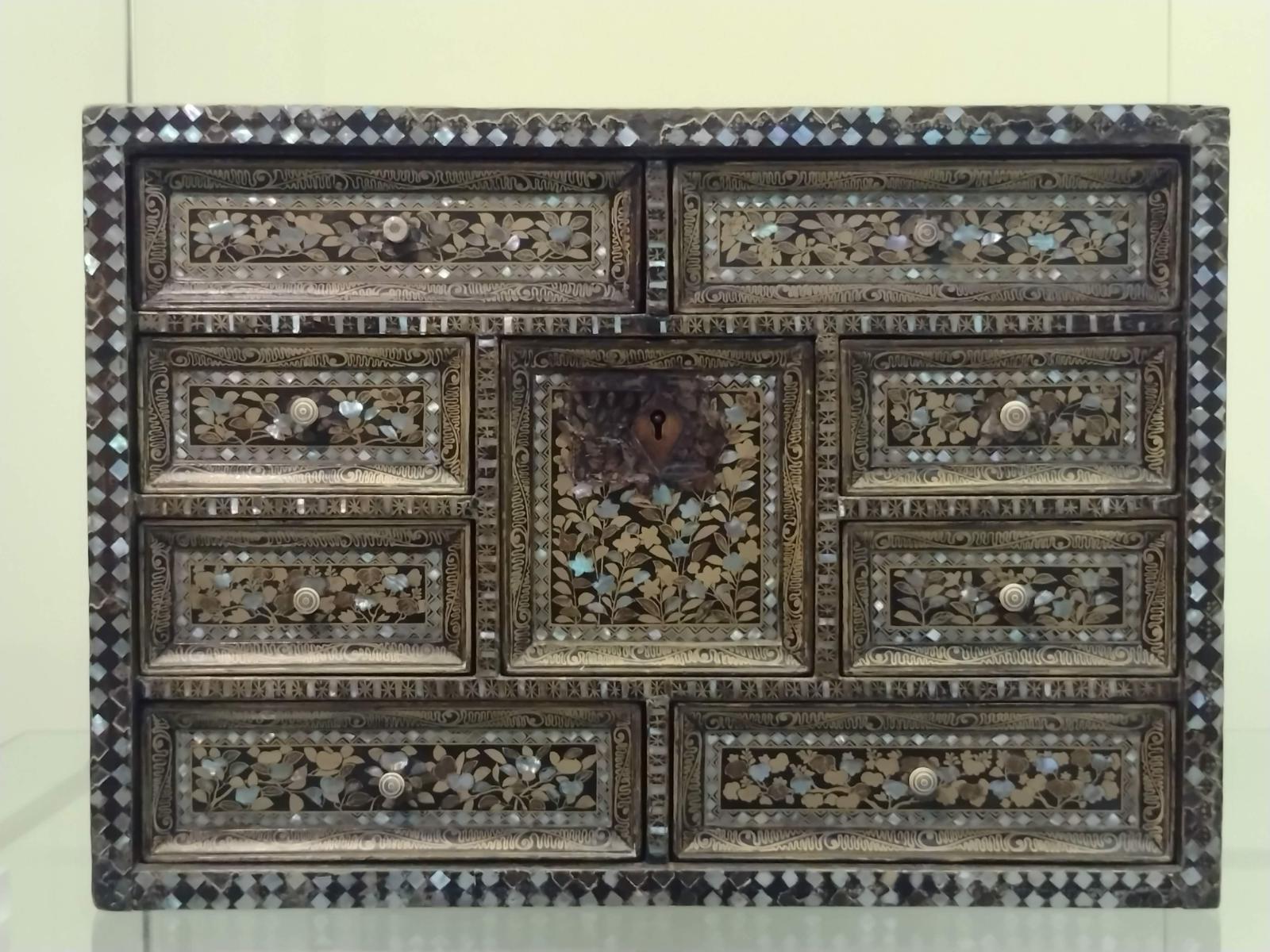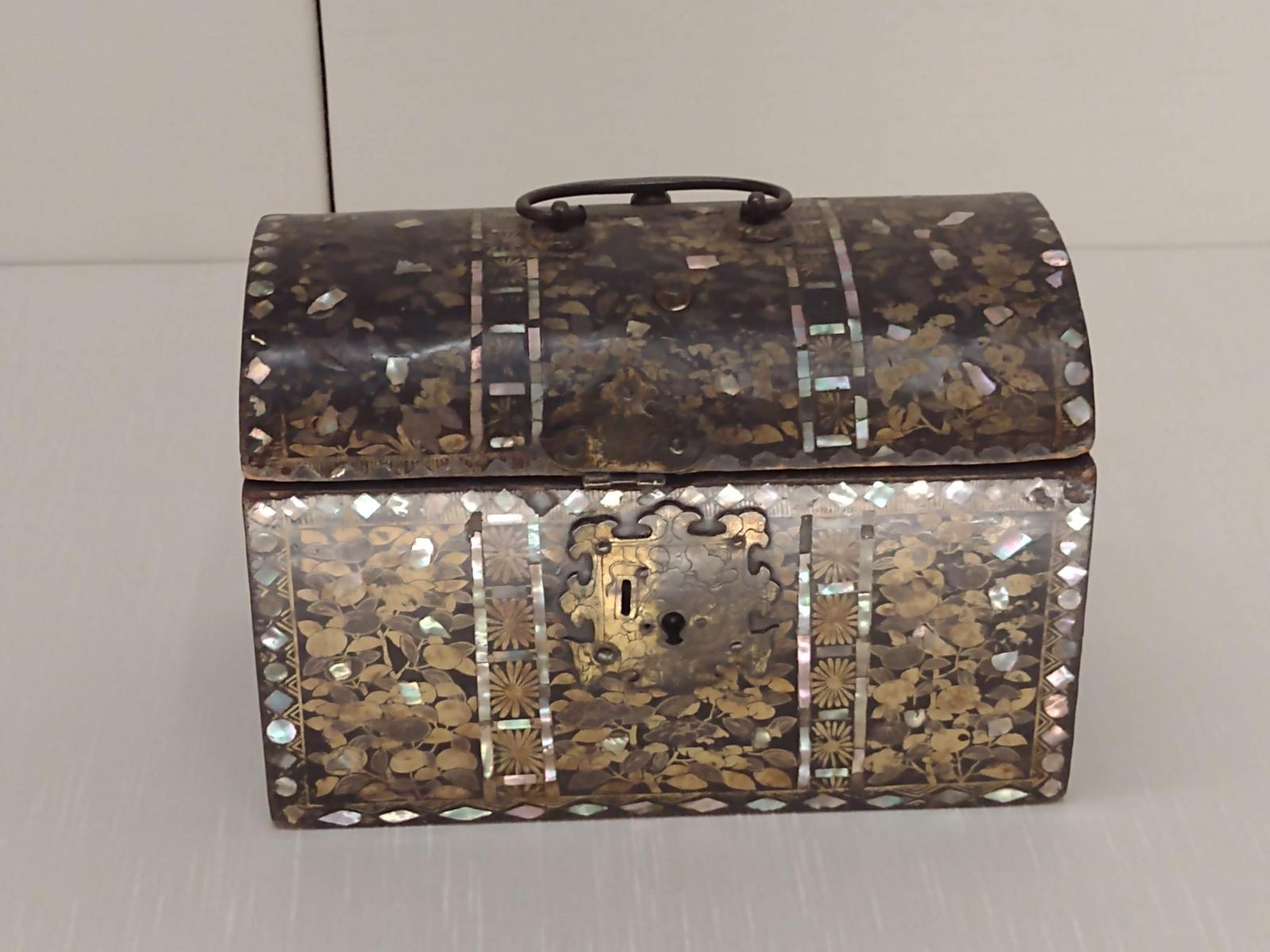Portugal & Spain, and Nanban lacquerware
by Kenta Takeshige
Throughout the ages all over the world, black has various meanings. The colour Black is in western societies generally associated with the negative, like darkness, evil, death, anxiety, and fear. On the other hand, it is associated the maximum effect of a dark colour, such as dignity. Black absorbs (almost) all colours and (almost) does not reflect colours within the visible light spectrum. This gives it an image of solidity, profound, and stability, implying power and control. At that time in the West, black was a colour associated with the social status, representing wealth and authority.1 Black is a symbolic colour of grandeur and authority, and was worn by many royal families, clergy, judges, and government officials. In our time, black has become a colour associated with chic, elegance and luxury.
In the 16th century, the Portuguese and Spanish conquered many parts of the world in search of economically lucrative raw materials and finished products. Also, the Portuguese who landed in Africa and the island of Madagascar discovered black wood. It was ebony.2 Italian, French and Flemish cabinetmakers made large pieces of furniture from these ebony woods, and decorated the surfaces with inlays of ivory, marble, glass, metal, and tortoiseshell. This is where the term "ébéniste" originates from, denoting a high-end furniture makers. Black furniture adorned palaces and churches, and quickly became popular throughout Europe among the wealthy elite. For this reason, ebony furniture, which began to be made in the 16th century, continued to be produced until the mid-20th century.
Not everyone had the capital to purchase these pieces of furniture, so "ebonising wood" became very popular, allowing inexpensive trivial wood to appear like the exclusive ebony wood.
Following ebony, lacquer products were brought from East Asia in the late 16th century.
Early imported lacquerware and Christianity are inseparable. Christian missionary activities required sacred paintings and ritual tools to convey the Christian world-view to Asians. The ritual utensils used in these Christian services were made of lacquer and have been passed down to Asia and Europe, including Japan. From Yoshimura’s publication "Nanban Kogei":
‘Because Japanese lacquerware used as Catholic ritual utensils has survived both inside and outside Japan, lacquerware for ritual utensils was made at the request of missionaries who came to Japan before Japanese lacquerware was mass-produced for export. Some of these were sent to Portugal and Rome. And high-class sailors and merchants from Portugal or Spain brought back Japanese lacquerware as well, and it is thought that interest in Japanese lacquerware rapidly grew in Europe.’ 3




The Asian lacquerware used in these Christian ceremonies is dominated by new styles that did not previously exist. The main forms include bread boxes for the sacrament4, lecterns, and altarpieces5 as ritual utensils, and cabinets, Western-style chests modelled after Western forms as other living furniture.
‘The entire decoration is covered with black lacquer, and each side is bordered with a continuous pattern of mother-of-pearl or gold Hira Maki-e (flat Maki-e). The interior space is basically designed with patterns of plants, trees, birds and beasts, and geometric patterns filled in without any gaps using gold and silver Hira Maki-e, or/and mother-of-pearl.’
‘This style, which suddenly appeared in the history of Oriental Lacquer Art, is called Nanban 6 lacquerware because it reflects the tastes of the Portuguese who were its first buyers.’
‘In various regions scattered along Portugal's route to the East, Christian ritual utensils and living furniture were created in an eclectic style that blended the shapes brought by the Portuguese with the individual ethnic characteristics of the decorations. Nanban-style exported lacquerware can be considered as one such example.’ 7
-
Natalie Ortega and Vincent Cattersel, "Reworking Black Dye Technologies of the Burgundian-Habsburg Netherlands: Three Types of Black Dyeing". In Burgundian Black: Reworking Early Modern Colour Technologies, edited by Sven Dupré and Jenny Boulboullé (Santa Barbara: EMC Imprint, 2022), Jenny Bouloullé and Sven Dupré, 1 July 2019. ↩
-
Ongoing research of Prof. Cattersel appears to the point that our today’s conception of ebony wood, that of the genus Diyospyros, is limited compared to that of the concept of 17th century merchants. At that time, any wood species that had a natural black ~ black-brown colouration, was named "ebony" and this can come from various genera, like Swartzia, Dalbergia, Euclea, etc. ↩
-
「南蛮工芸」吉村元雄 小学館 1974年, Quote: Yamazaki Tsuyoshi, "Japanese lacquerware that crossed the seas 1 - 16th and 17th century", Japanese Art no. 426, Shibundo, 2001. Pg. 21. (「海を渡った日本漆器」山崎剛 (16・17世紀) 日本の美術No.426 至文堂 2001年) ↩
-
Sacramental bread refers to bread that is consecrated for communion and worship at Mass and Divine Liturgy in various Christian denominations, including the Catholic Church, Orthodox Church, and Eastern Churches. It is believed to be the substance of the body of Jesus Christ. This box was made to house sacramental bread. ↩
-
Altarpiece is a wall-mounted zushi with a double-hung door that houses sacred paintings that are objects of worship. ↩
-
Nanban is one of the four tribes of barbarians, and is a derogatory term used by the imperial court that controlled continental China for the non-conformist peoples of the south. It was originally used in Japan with the same meaning, but after the beginning of trade with Europeans in the 15th century, the word came to refer primarily to artifact and people from Europe, Southeast Asia, Spain, and Portugal. ↩
-
Quote: Yamazaki Tsuyoshi, "Japanese lacquerware that crossed the seas 1 - 16th and 17th century", Japanese Art no. 426, Shibundo, 2001. Pg. 27, 63. (「海を渡った日本漆器」山崎剛 (16・17世紀) 日本の美術No.426 至文堂 2001年) ↩
